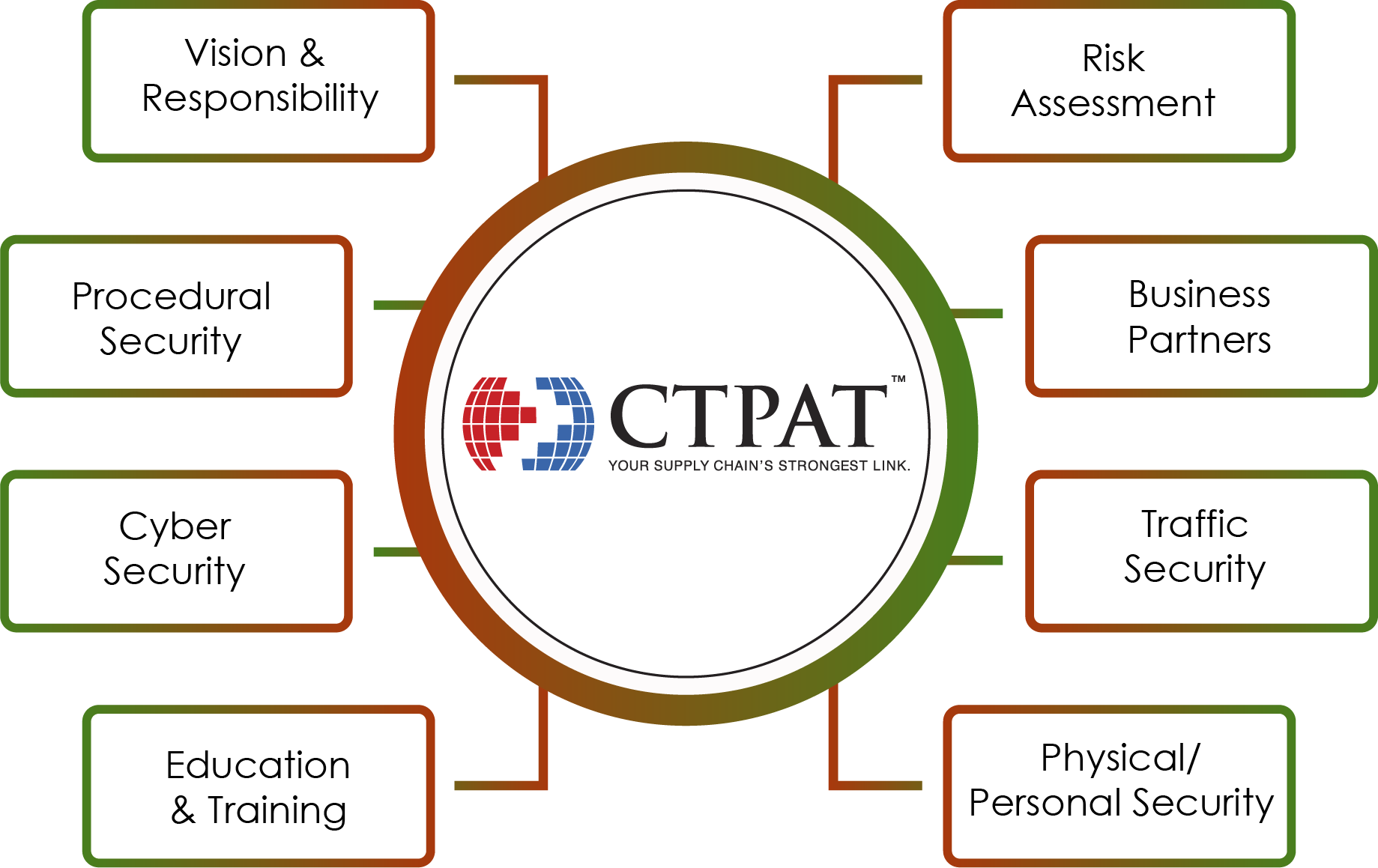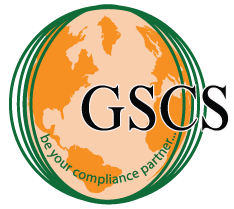
C-TPAT Certification and Audit for Boost Supply Chain Security
Introduction: Securing your supply chain is essential in today’s globalized trade context. Businesses have to worry about terrorism, natural disasters, security issues, and a hundred different ways goods can be compromised. One of the best active methods to strengthen security is with C-TPAT Certification and its verifiable processes. Customs-Trade Partnership Against Terrorism (C-TPAT) is a program that the U.S. Customs and Border Protection (CBP) manages to assist businesses in mitigating vulnerability along the supply chain while reaping plenty of benefits.
The Customs-Trade Partnership Against Terrorism (C-TPAT) is a voluntary supply chain security program led by U.S. Customs and Border Protection (CBP) and focused on improving the security of private companies' supply chains with respect to terrorism. We perform supply chain security audits against all Customs-Trade Partnership Against Terrorism (C-TPAT) global and regional requirements.
As part of enforcing and adhering to the international supply chain security standards, companies must assess their supply chain to identify, mitigate and eliminate potential security risks.
This article will discuss the importance of C-TPAT Certification, its inner workings, its benefits, and how C-TPAT audits enhance security in business organizations.

What is C-TPAT Certification?
C-TPAT (Customs-Trade Partnership Against Terrorism) is a program that increases the safety of cargo crossing US borders. Shipment companies, alongside the CBP, offer their assistance in analyzing and addressing potential gaps in their supply chains.
Key Objectives of C-TPAT Certification:
✔ Defend the supply chain against terrorism and attempts of smuggling.
✔ Boost effectiveness by minimizing inspections and hold-ups at the port of entry.
✔ Enhance collaboration between the CBP and the business community towards safe trade.
Why is C-TPAT Certification Important for Supply Chain Security?
The value of C-TPAT certification is critical to international trade. Here are some of the main reasons why C-TPAT should be obtained by all businesses within the realm of trade:
Increased Protection: C-TPAT certification allows companies to spot gaps in their supply chains and take action to prevent potential threats.
Fast Custom Processing: Certified businesses spend less time under suspicion and examination by customs, which saves time and reduces waiting periods at ports in the US.
International Recognition: C-TPAT is internationally understood, and therefore, the certification increases a company’s goodwill and willingness to enhance its security.
Cost Savings: Since there are fewer inspections and delays, businesses can reduce operations costs such as storage, fines, and increased shipping fees.
Competitive Advantage: Businesses that are C-TPAT Certified are many steps ahead of those that are not in a market that focuses on security.
Benefits of C-TPAT Certification
The C-TPAT certification provides faster processing of goods due to fewer customs inspections, enhancing security within the supply chain. Moreover, it increases operational effectiveness, improves a business’s image and credibility in the international market, and ensures adherence to international trade regulations.
1. Lower Inspection Rates and Delays
Member companies are likely to experience significantly fewer customs inspections, which subsequently leads to reduced delays and faster clearance of goods at the different ports.
2. Protection of the Supply Chain
With advanced security, businesses’ supply chains can be safeguarded from theft, smuggling, or even terrorism.
3. Enhanced Reputation
C-TPAT certification demonstrates a company’s commitment to secure trade, enhancing trust and credibility with partners and customers.
4. Priority Processing
Certified companies receive priority processing during customs clearance, saving time and resources.
5. Restricted Area of Trusted Partners
Being part of C-TPAT allows for trading with trusted partners who have similar security measures and control-sharing goals.
6. Compliance with International Standards
C-TPAT focuses on international trade security initiatives that ensure a global approach, such as the Authorized Economic Operator program (AEO).
The C-TPAT Audit Process
To gain C-TPAT certification, companies undergo a structured audit process:
Application Submission: Submit company and supply chain details via the C-TPAT portal.
Risk Assessment: Identify and mitigate supply chain vulnerabilities.
Security Profile Evaluation: CBP reviews physical security, cybersecurity, access controls, and supplier vetting.
Validation: CBP verifies security measures, often with on-site visits.
Certification and Revalidation: Certification is granted upon compliance, with periodic revalidations to address new security challenges.
C-TPAT Certification Process
To achieve C-TPAT certification, you have to complete several key steps. Here’s a breakdown of the process:
1. Application: For certification, you must apply to CBP, providing details on supply chain operations and security measures.
2. Self-Assessment: Complete a self-assessment to evaluate security practices and identify areas for improvement.
3. Review and Approval: CBP reviews the application and self-assessment. If compliant, the company receives C-TPAT certification.
4. Ongoing Monitoring and Audits: Certified companies undergo audits every three years and must report significant changes to CBP.
Why Choose GSCS International for C-TPAT Certification?
Extensive Expertise: GSCS International has successfully assisted several clients in attaining C-TPAT certification, paving the way for smooth business practices.
Tailored Solutions: Understanding that every supply chain has its own set of challenges, GSCS International delivers tailored strategies to address particular security requirements.
Comprehensive Support: GSCS provides comprehensive support at every stage of the process, initially from application to the last step of certification validation.
Commitment to Excellence: In an effort to encourage compliance, GSCS strives to assist its clients in gaining control of their supply chain security so that certification can be achieved easily and effortlessly.
Conclusion: C-TPAT compliance offers great benefits for companies looking to improve operational effectiveness, earn the trust of stakeholders, and enhance supply chain security. C-TPAT certification companies can also address gaps and vulnerabilities while capturing international business opportunities.
Improving your business as a manufacturer, retailer, or logistics provider is simply a calculation away with GSCS International, the industry leader in optimizing supply chain compliance and certification services. Invest today and watch your business’s reputation and supply chain resilience grow. Don’t hesitate any further: the benefits of C-TPAT compliance go beyond supply chain security. Differentiate your business in the international operating landscape today.
FAQ:
A CTPAT audit evaluates a company's compliance with Customs-Trade Partnership Against Terrorism (C-TPAT) security criteria to enhance supply chain security.
A CTPAT inspection involves verifying a company's security measures, including physical security, personnel access, and supply chain practices, often through on-site visits.
The principle of CTPAT is to foster collaboration between businesses and U.S. Customs and Border Protection (CBP) to enhance global supply chain security.
The checklist includes assessing physical security, cyber security, personnel vetting, supplier validation, and transportation security measures.
Requirements include conducting a risk assessment, maintaining a secure supply chain, meeting CBP security criteria, and participating in regular validations.
The guide outlines steps to evaluate and improve supply chain security, including risk analysis, documentation review, and corrective actions.
The process involves application submission, risk assessment, security profile evaluation, CBP validation, and certification, followed by regular revalidations.
